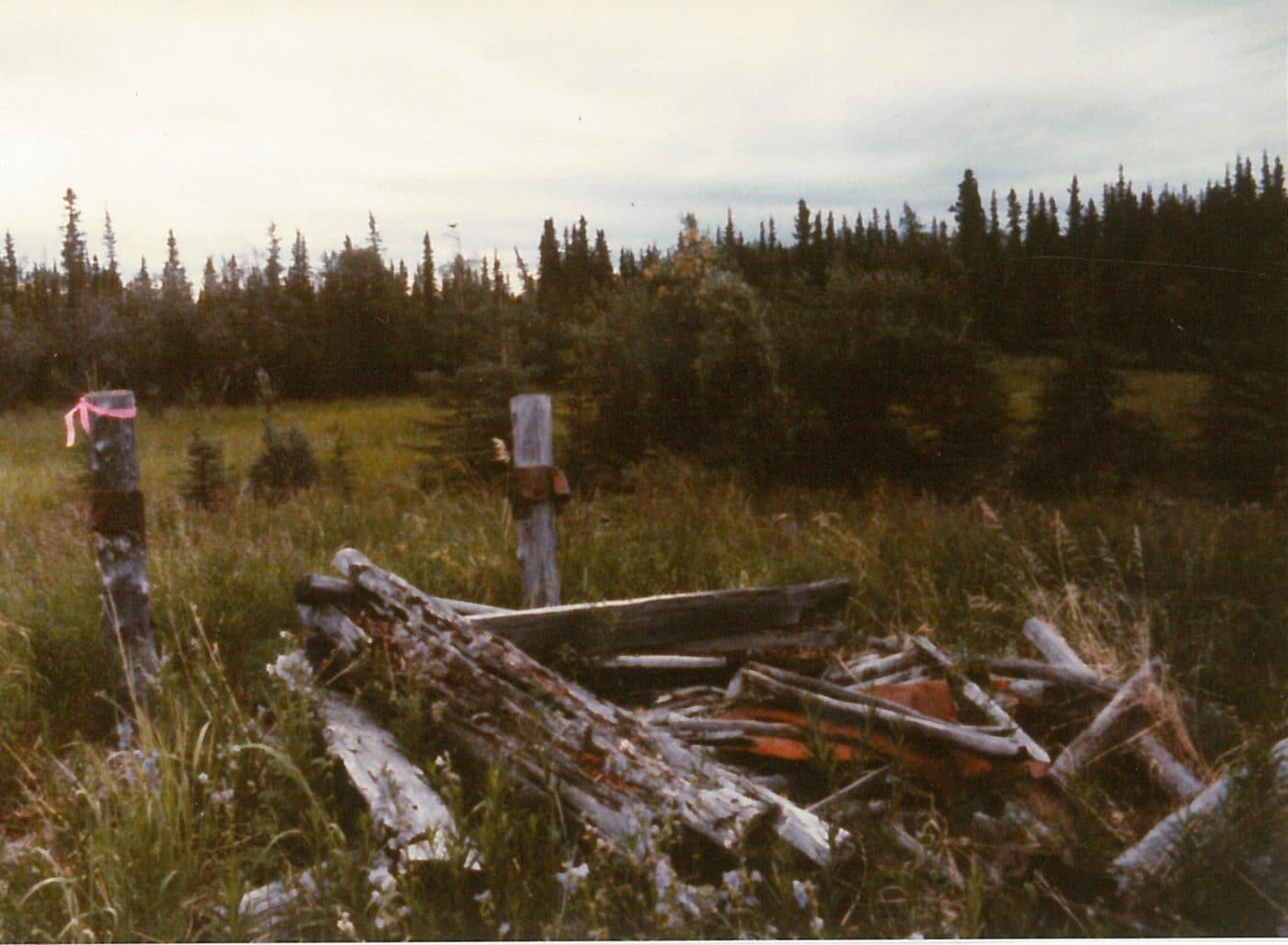By Tana Finnesand, Cultural Resource Technician, AI Land Department

For thousands of years, Ahtna people have lived in the Copper River and Susitna River valleys. Everywhere you look, you see places where Ahtna people fished, hunted, built a caribou fence, ran a trapline, camped, or lived in a village. You can find the exact spots where the people hammered out their copper tools, or fought a battle to protect themselves, their food, or their land from marauding invaders.
The Ahtna Land Department is keeping track of these old places by creating and maintaining a cultural places catalog—a listing of all known historic and cultural sites, with their locations, backed up by files containing photographs, existing site maps, and cultural information that is known about that place. We won’t know exactly how many documented historic sites there are until the catalog is finished, but there are possibly 2,000-3,000 sites.
What are we cataloging?
We are cataloging historic properties—old villages, campsites, hunting, fishing and trapping camps, cemeteries, old stone tool-making places, isolated house pits and cache pits—as well as important cultural places that Elders tell stories about, but which may not have physical signs left by people. One such example is Natsede’aayi, the woman with the baby on her back, a well-known stone outcropping visible on the way to Anchorage which marks the far side of traditional Ahtna country.
Where do we get the information from?
Archived documents are our starting point to recover information that Elders have already told to researchers in years past. Publications such as Where Raven Stood by Holly Reckord and James Kari’s Ahtna Place Names book are full of stories and knowledge about old places. Records of documented archeological sites in Ahtna territory are also a major source. The Alaska Office of History & Archaeology and Wrangell-St. Elias National Park both maintain confidential records of Ahtna sites they found on what is now state or federal land. Reports of sites Ahtna has received over the years will be added. Transcripts from long-ago interviews with Ahtna Elders will yield important information to include in the catalog.
Why is it important to create this catalog?
For Ahtna, Inc. to carefully use and manage the land on behalf of Ahtna people, we must know where these sites are, so damage to them can be avoided or managed. When issuing permits or carrying out projects, Ahtna must know where the historic/cultural sites are on Ahtna land. And it is just as important to know about Ahtna sites that are NOT on Ahtna land, since agencies often contact Ahtna, Inc. to ask about important cultural sites in their project areas on state and federal land. Finally, it is important to know where these sites are to help keep them in living memory! Ahtna people themselves are the greatest repository of Ahtna culture, passing knowledge and memories of cultural places down through the generations by oral history. Ahtna people keep the culture connected through this process. Ahtna, Inc. can play a role in this by maintaining this cultural catalog to document, as precisely as possible, where these important places are.
How will we protect the information?
As everyone probably realizes, the catalog must be kept confidential. In the past, cemeteries, village sites, trapping cabins, and other old Ahtna places have been damaged by recreationists, ATV users, trespassers, souvenir-seekers, and those who are simply careless. We will work with Ahtna, Inc.’s IT staff to place it on their secure computer server in a way to protect it from hackers and unauthorized users, as well as keep a hard copy in a secured location.
